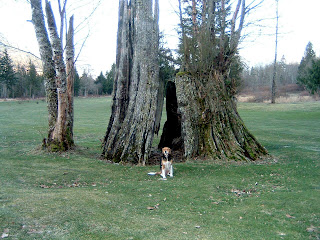Bedrock bald, rose and trees growing in the fractures.
Balds are a relatively rare landscape in western Washington. They also happen to be a very appealing landscape. Balds are areas of bedrock with very thin soil. The unique feature of balds is they are relatively gentle sloping and have bedrock at very shallow depth with typically only a few inches. This thin soil cover or in some cases mostly moss is an environment that can become very wet as water can not perculate into the ground, but can also becomes desiccated during periods of no rain.
Hammer and moss
Western Washington is dominated by forest, but balds provide relief from the thick forest blocking sun and also are locations with plant diversity much greater than the forest areas. I would expect that the chemistry of the underlying bedrock plays a significant role in the types of plants that are present in addition to rainfall amounts, sun exposure, wildlife and anthropological impacts.
Outside of the San Juan Islands balds are very rare in the western Washington lowlands. The prevalence of balds in the San Juans are the result of bedrock outcrops that are resistant to weathering, the somewhat drier climate, recent glaciation of the area that stripped off soil, and the island setting that has limited wind blown sediment or volcanic ash deposition that would add to soil formation. These combinations of conditions are rare outside of the San Juan Islands.
In parts of the San Juans man maintained prairie habitat blends with balds such that is some areas the two landscapes are difficult to distinguish. Setting fires for wildlife habitat management both for the creation of forage for deer and maintaining oak land and camas habitat as food sources was practiced for thousands of years in western Washington. The San Juans drier climate was conducive to fire setting as well as natural fires and the fact that balds become dried out likely led to the these areas being burned routinely.
Treeless balds and prairie on Orcas Island.
Deer likely play a role in maintaining the minimal growth of trees in bald and prairie areas in the San Juans. The deer are attracted to the grasses and herbaceous plants in the balds, but enjoy the taste of new tree buds keeping tree encroachment at least partly at bay.
Deer pruned Douglas fir
Bald on Orcas Island with mature Douglas firs established in rock joints.
This area is a mix of bald and prairie landscapes.
Another factor in maintaining bald areas is salt spray from occasional large waves such that balds blend into shoreline bedrock outcrops. Occasional but rare very high waves may remove soil and the salt spry limits some plants.
Balds on San Juan Island grading into shoreline bedrock areas
Balds Counties in Washington State are required to protect what are called critical areas such as wetlands, but balds are not specifically named in critical areas ordinances. Some protection of these unique features may fall under wildlife habitat protection sections of local critical areas ordinances if a rare plant or animal is identified in association with a bald.
The openness and park like setting of balds makes them attractive areas for people. The bedrock slopes are typically stable and they are excellent sites in terms of stability in an earthquake. Hence, balds are attractive sites for development with park like landscaping.
Residences on bald areas on the west shore of San Juan Island
But balds have been gaining protection. Balds are recognized in taxation programs where property owners that protect balds from development may score higher points to get a larger tax break on their property taxes if they forgo development options. If after taking the tax break the owner changes their mind they will owe back taxes on the tax break. A number of organizations have recognized balds for protection and have prioritized purchasing land or conservation easements to protect these rare land forms and the plant communities associated with these feature. This approach provides a more permanent level of protection and has been pursued by the San Juan Land Trust as well as the Nature Conservancy.
The Department of Natural Resources which manages large tracts of land in Washington State for public benefit recognizes balds in its Habitat Conservation Plan (HCP). Obviously these features do not have much high quality timber, but the DNR recognizes that crossing these areas with roads should be avoided. But a more important DNR program is to place these areas withing Natural Area Protection. In that regard the DNR has been studying balds and has been protecting some of the key habitat.
Balds are significant part of the San Juan Islands and it is a feature of the islands that sets them apart from much of the rest of western Washington. Beyond the scenery of the forest and water that the islands possess, the open areas provided by balds and prairies adds greatly to the appeal of the islands. It is a landscape that I greatly enjoy seeing and occasionally working on. Typically there are good rock outcrops to look at, little wrestling with thick vegetation and if its a warm day a great spot for a nap stretched out on the moss.














































